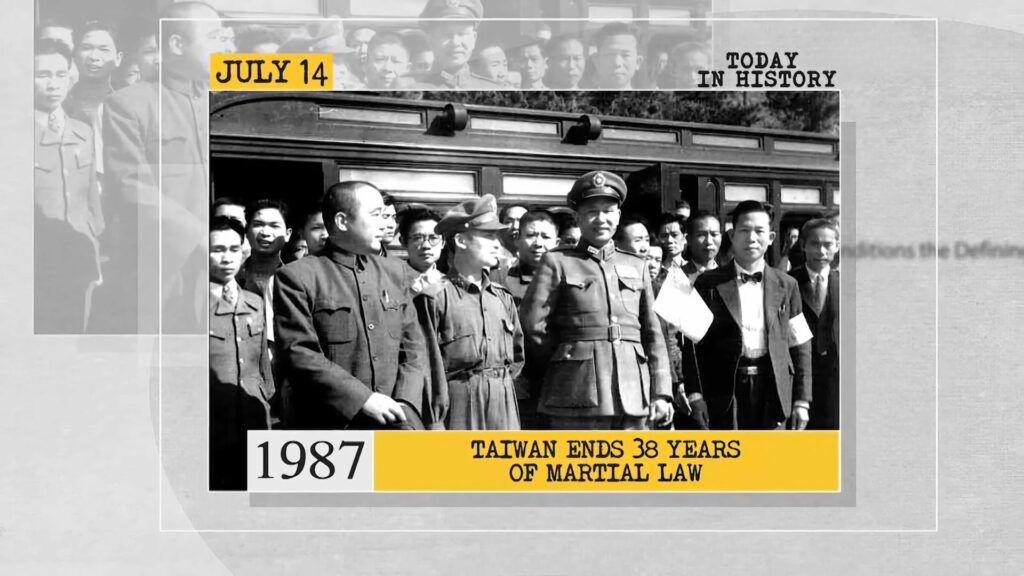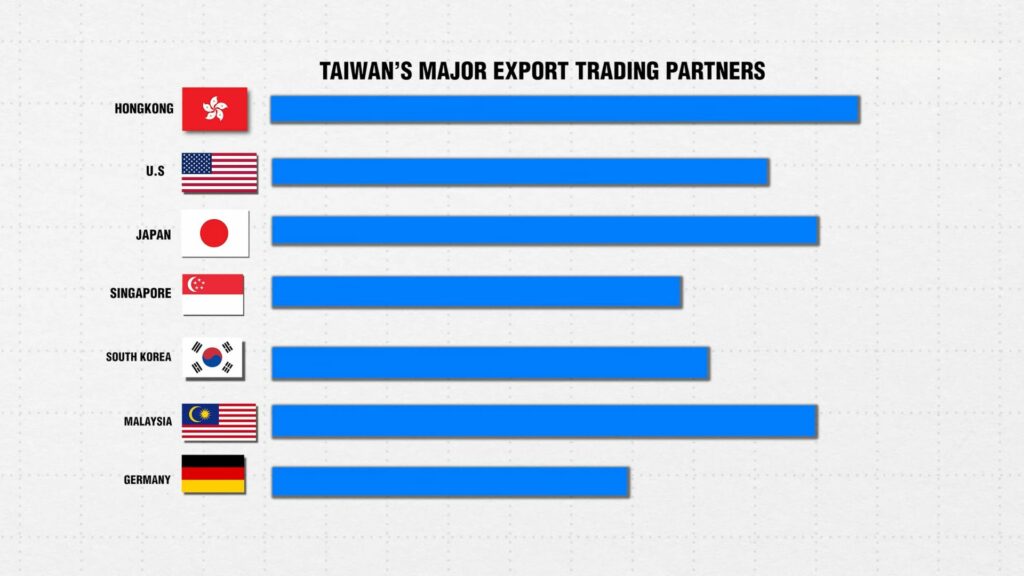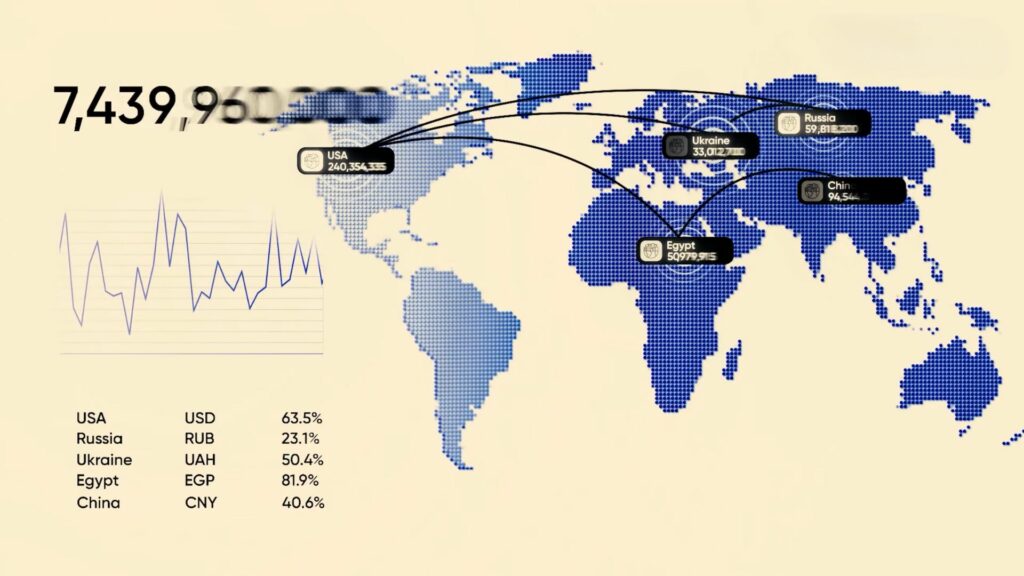Taiwan, though often overshadowed by larger global players, has quietly risen to become an essential hub for technology and chip manufacturing. From the brink of economic despair after World War II, Taiwan has transformed into a highly industrialized and technologically advanced economy.
But how did a small island nation with limited resources make such remarkable progress in such a short time? This article explores Taiwan’s journey from agricultural reliance to becoming a global economic powerhouse.
A Post-War Struggle Turned Opportunity
In the aftermath of World War II, Taiwan’s economy was in shambles. The island had suffered extensive damage from bombing campaigns, and its infrastructure lay in ruins. The situation worsened when over two million refugees, fleeing the Chinese Civil War, arrived in Taiwan.
This influx strained the island’s already depleted resources. At the time, Taiwan’s per capita income was among the lowest in the world—lagging behind nations like Haiti and Madagascar. The country was grappling with widespread unemployment, severe poverty, and a stagnant economy.

Despite these challenges, Taiwan’s leaders remained determined. Recognizing that they could not rely on traditional means of economic development, they made a critical decision: shift away from agriculture and embrace technology.
This marked the beginning of Taiwan’s extraordinary transformation. In a world where many developing countries struggled to recover from war, Taiwan used its adversity as an opportunity to rethink its economic strategy.
A Strategic Shift from Agriculture to Technology
In the 1950s, Taiwan’s government, under the authoritarian leadership of the Kuomintang (KMT) party, began implementing sweeping reforms aimed at industrialization. While the immediate goal was to stabilize the country’s crumbling economy, there was also a long-term vision of transforming Taiwan into a major global player.
One of the first and most significant reforms was in agriculture. Taiwan’s land reform program redistributed land from wealthy landlords to the nation’s struggling tenant farmers. This move not only boosted agricultural productivity but also laid the groundwork for future economic growth.
As farmers’ incomes grew, they began investing in better equipment, modern irrigation systems, and fertilizers. The government capitalized on this newfound prosperity by investing in industrialization, moving away from a purely agrarian economy.
This shift wasn’t without its challenges, but it was clear that relying on agriculture alone would not be enough to support Taiwan’s future ambitions. Taiwan’s leaders recognized that the future lay in manufacturing and technology—a decision that would set the stage for Taiwan’s remarkable rise.
The Birth of a Global Electronics Hub
The 1960s and 1970s marked the beginning of Taiwan’s rise as a global electronics hub. The Taiwanese government created special economic zones designed to attract foreign investment and boost manufacturing.
These zones, known as export processing zones, provided tax breaks and incentives to foreign companies, making Taiwan an attractive destination for manufacturing. As a result, major international companies like IBM, Philips, and Texas Instruments set up operations in Taiwan, producing consumer electronics on a massive scale.

By the late 1970s, Taiwan was producing millions of televisions, radios, and other consumer electronics. But it wasn’t just about quantity—Taiwan began to develop a reputation for quality. Taiwanese manufacturers embraced innovation, producing high-quality products at competitive prices.
This laid the foundation for Taiwan’s future success in the global technology sector. Taiwan quickly became a vital link in the global supply chain for electronics, and the country’s economy boomed as exports soared.
One of Taiwan’s most significant achievements during this period was its dominance in semiconductor manufacturing. Companies like Taiwan Semiconductor Manufacturing Company (TSMC) played a pivotal role in cementing Taiwan’s status as a global tech hub.
By the 1980s, Taiwan controlled a significant portion of the world’s semiconductor market, which was crucial for the production of everything from personal computers to smartphones. Today, TSMC is a global leader in advanced chip manufacturing, controlling over 60% of the global market and being the world’s 8th most valuable company by market cap in 2024.
Education and Infrastructure
Education played a crucial role in Taiwan’s economic transformation. As the country shifted from agriculture to industry, the government realized that an educated workforce was essential for sustained growth.
In the 1980s, Taiwan significantly increased its education spending, focusing particularly on higher education and vocational training. This investment in human capital was instrumental in fostering technological innovation and entrepreneurship.
The government also invested heavily in infrastructure projects that supported industrial growth. Taiwan’s Industrial Technology Research Institute (ITRI), established in 1973, was a critical player in fostering new technologies and transferring them to private enterprises. This initiative not only helped Taiwan’s companies remain competitive globally but also contributed to the development of high-tech industries, such as semiconductor manufacturing.
Infrastructure projects during this period included the construction of ports, highways, and power plants, all of which were necessary to support the rapidly growing industrial sector. The combination of an educated workforce and state-of-the-art infrastructure allowed Taiwan to remain competitive and attract foreign investment. By the 1980s, Taiwan’s economy had grown sixfold, making it one of the fastest-growing economies in the world.

Navigating Geopolitical Challenges
Despite its economic successes, Taiwan has always faced significant geopolitical challenges. The island’s political status remains controversial, with China claiming Taiwan as its territory and pressuring other countries not to recognize it as an independent nation.
As a result, Taiwan is officially recognized by only a handful of countries. However, this lack of formal recognition has not stopped Taiwan from becoming a global economic powerhouse.
Taiwan’s political isolation has had consequences, particularly in terms of international trade and finance. Many countries, especially those with strong economic ties to China, are hesitant to engage in direct diplomatic relations with Taiwan.
Despite these challenges, Taiwan has maintained strong trade relationships with major economies like the United States, Japan, and South Korea. In fact, Taiwan’s economic success has allowed it to remain resilient in the face of political uncertainty.
The 1980s Boom and the Birth of High-Tech Industries
By the 1980s, Taiwan’s economic growth was nothing short of remarkable. The island had gone from a war-torn nation with an agrarian economy to a global leader in manufacturing and technology.
Taiwan’s shift from low-end consumer goods to high-tech industries like semiconductors, personal computers, and smartphones marked a turning point in its economic history. Companies like Acer, ASUS, and HTC became household names, known for their high-quality electronics.
In 1985, Taiwan faced another economic challenge with the signing of the Plaza Accord, an agreement that devalued the US dollar against other major currencies. This led to a sharp rise in the value of Taiwan’s currency, which made exports less competitive and triggered a temporary economic bubble. However, Taiwan’s economy proved resilient, and the government responded by promoting more advanced manufacturing and innovation to stay competitive in the global market.
Taiwan’s success in the electronics and technology sectors allowed the country to maintain its position as a global economic leader, even as wages and production costs rose. By focusing on innovation and higher-end products, Taiwan was able to continue its rapid growth and development.

Navigating Global Shifts and Taiwan’s Role in China’s Economic Rise
In the 1990s, Taiwan faced new challenges as labor-intensive industries began moving operations to China, where production costs were lower. While this shift threatened Taiwan’s manufacturing base, it also opened new opportunities.
Taiwanese companies played a major role in China’s economic rise, particularly in the electronics and technology sectors. By the mid-2000s, many of the top exporting companies in China were Taiwanese-owned. Despite this shift, Taiwan continued to focus on high-tech industries, retaining research and development, and headquarters operations on the island.
Real wages in Taiwan have remained relatively stagnant since the 2000s, but the country has adapted by transitioning to more advanced and capital-intensive industries. Taiwan’s semiconductor industry, for example, continues to thrive, with TSMC leading the way in global chip production.
Taiwan’s Resilience and Future Prospects
Despite the geopolitical challenges Taiwan faces, the island remains a model of economic resilience. Its strategic focus on technology, education, and innovation has allowed it to thrive in a competitive global market. Taiwan’s economy is no longer dependent on labor-intensive manufacturing but is now centered on high-tech industries, research and development, and cutting-edge innovation.
The future of Taiwan’s economy will depend on its ability to navigate the shifting geopolitical landscape while continuing to invest in education, technology, and infrastructure. While China continues to assert its claims over Taiwan, the island’s economic strength and the resilience of its people remain its greatest assets.
Wrapping Up
Taiwan’s remarkable journey from a war-torn nation to a global economic powerhouse is a testament to the resilience, innovation, and strategic vision of its people. Despite its complicated political status and lack of formal recognition on the global stage, Taiwan has carved out a place for itself as a leader in technology and manufacturing.
The island’s success is a reminder that with the right policies, investment in education, and a focus on technological innovation, even the most challenging circumstances can be overcome. Taiwan’s strength lies not just in its industries, but in the spirit of its people—people who continue to shape the future of their country with their determination, creativity, and resilience.







